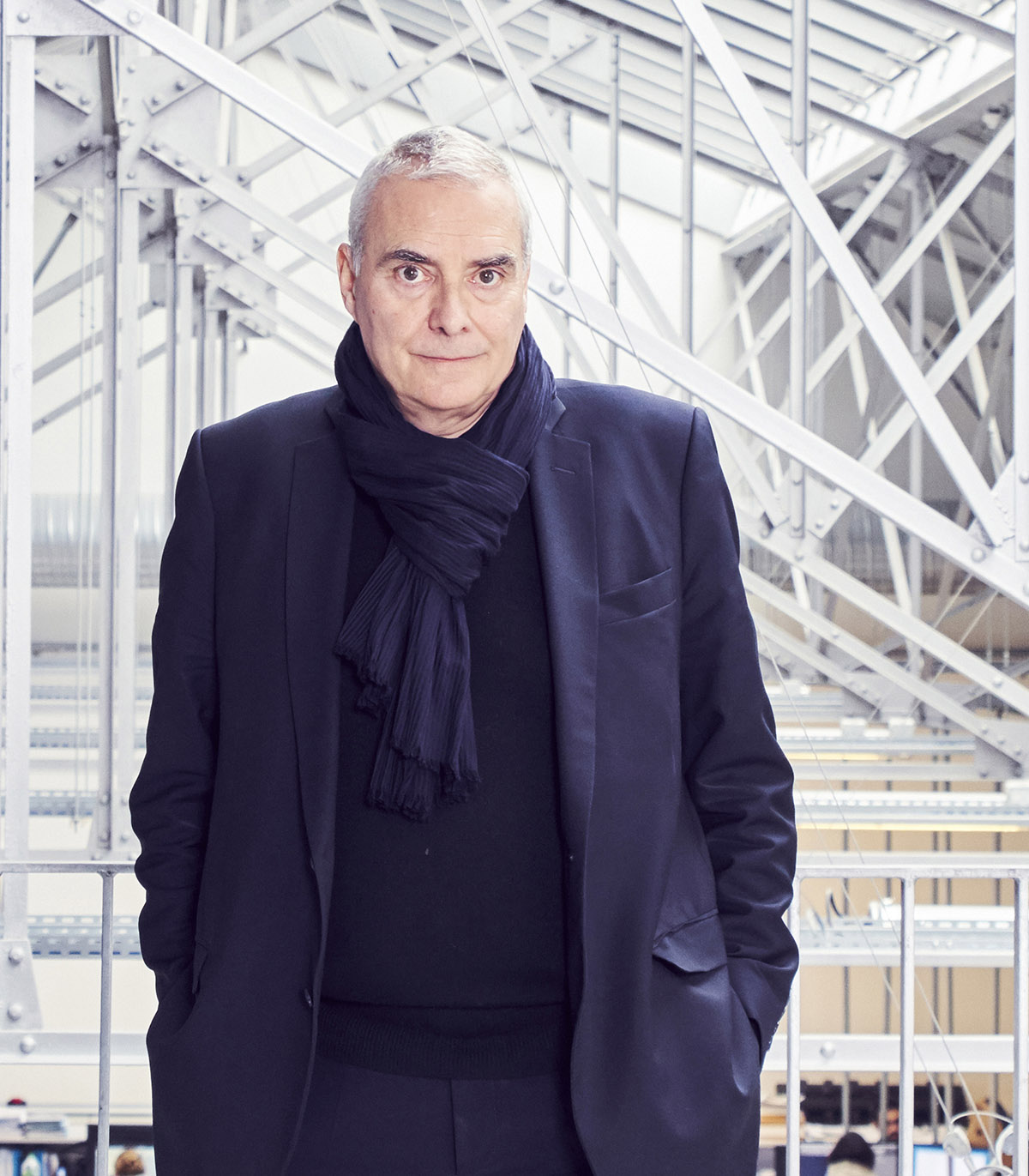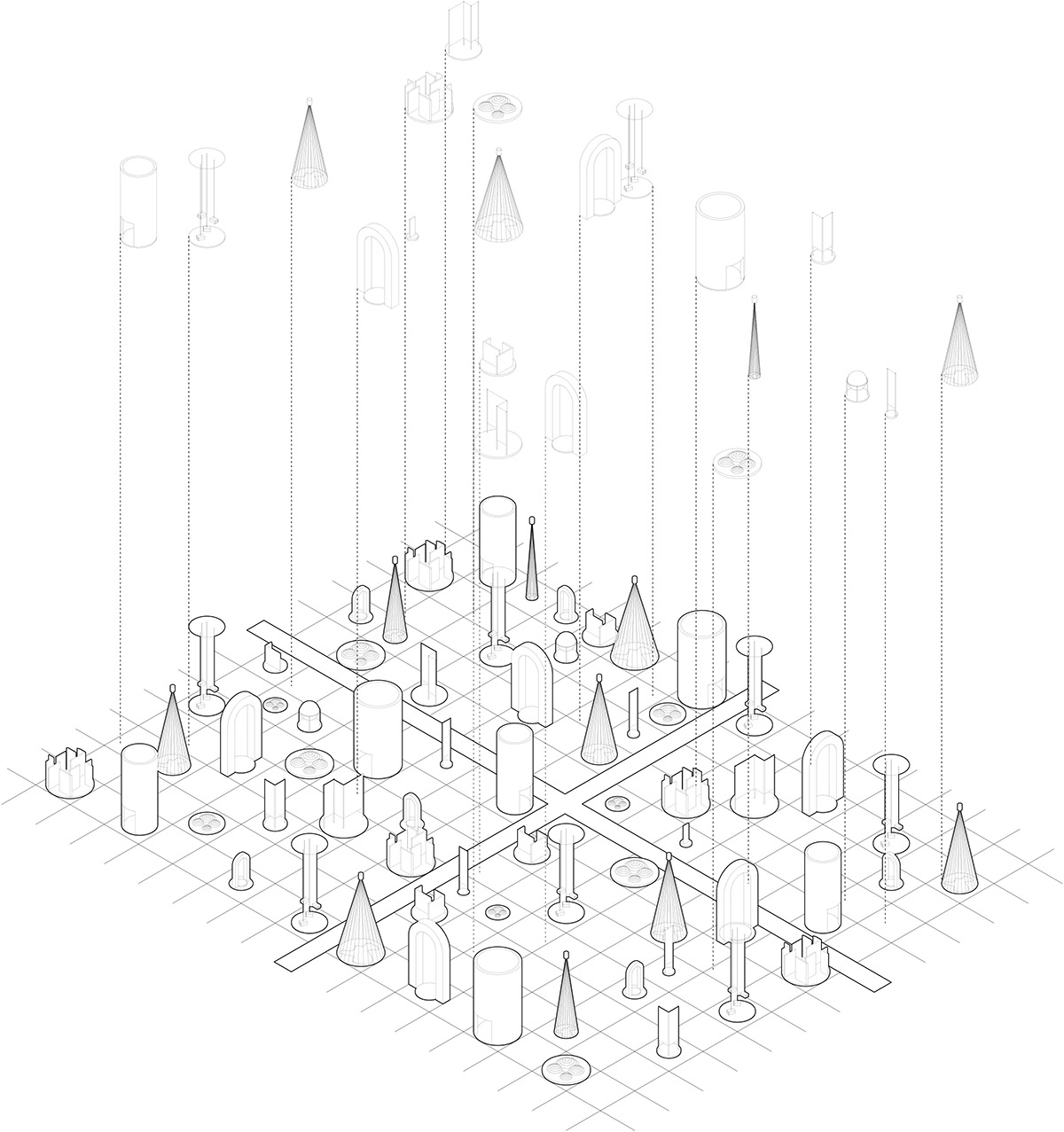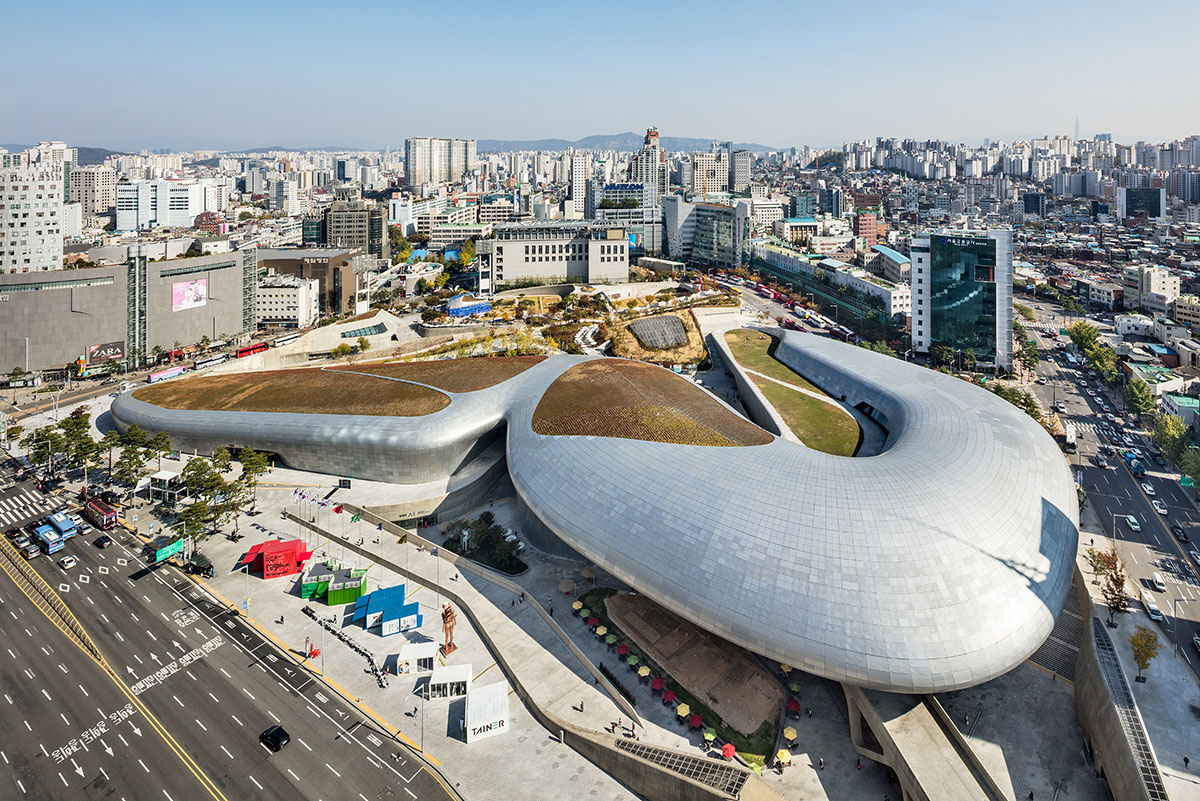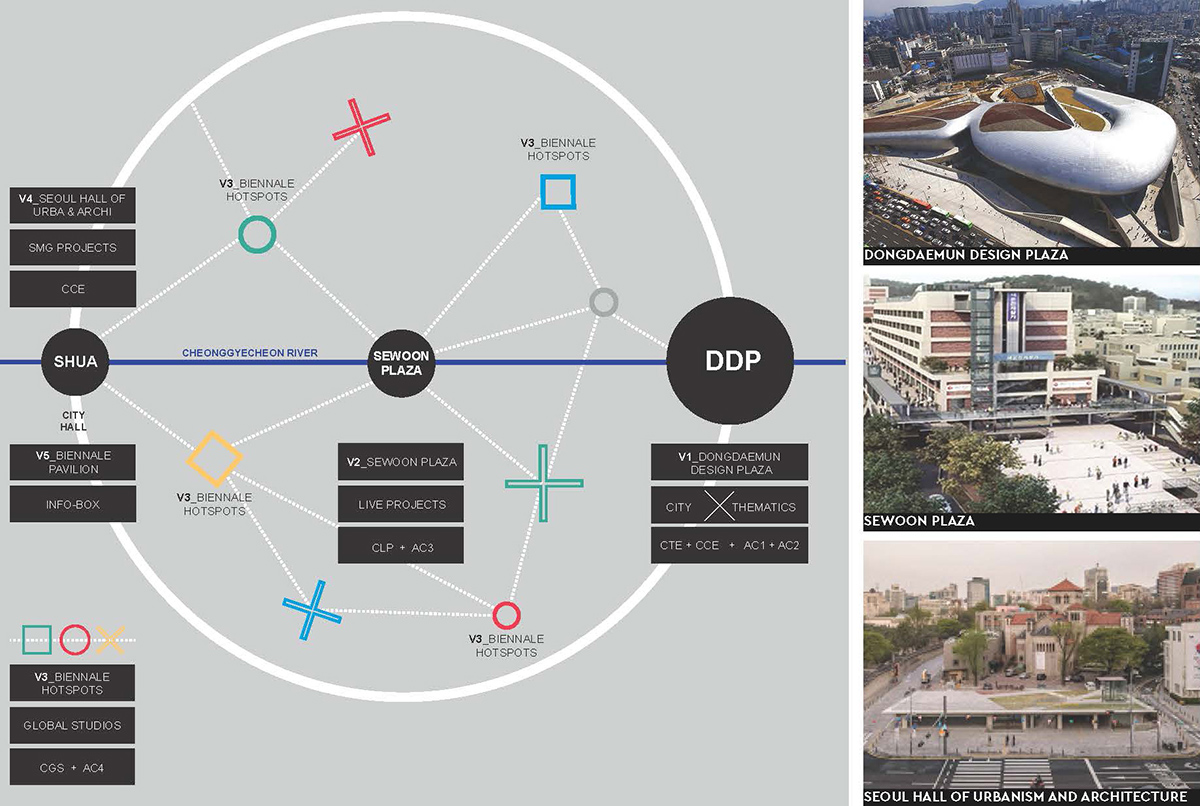Submitted by WA Contents
"Is the current model of architecture biennales still relevant?", asks Dominique Perrault
Korea, South Architecture News - Oct 07, 2021 - 13:20 3272 views

"Is the current model of architecture biennales still relevant?", asks French architect and urban planner and SBAU 2021 General Director Dominique Perrault in a letter that he shared his own reflections on architecture biennales.
According to Dominique Perrault, in large-scale events such as the biennials, total digitization is a mistake although digital communication tools are unavoidable part of such large-scale events.
Perrault believes that in-person meetings and exchanges are a significant part of public events where thousands of people meet each other and are exposed to exchange of knowledge.
In a letter sent to a French Press Le Point and World Architecture Community, Perrault shares his own reflections on the future of this kind of events and architecture biennales.
The 3rd iteration of the 2021 Seoul Biennale of Architecture and Urbanism opened to the public on 16-17 September with online talks and ceremonies via the SBAU's Youtube channel and website. The physical opening of the Biennale realized with the absence of Dominique Perrault due to the ongoing travel restrictions worldwide. Perrault plans to attend to the closing of the exhibitions at the end of October.
In relation to today's most pressing issues, this year's theme is "CROSSROADS Building the Resilient City" which intended to promote more responsible and citizen-focused urban growth while tackling the resilient city.
What remains if we do not come together there?
In his letter, Perrault mainly touches upon the difficulties of directing such a large-scale biennial in today's pandemic conditions, and questions whether the current model of architecture biennales and their production methods are still relevant or not.
"A biennale is intended to be a place for in-person exchanges. What remains if we do not come together there?," Perrault asks.
"In this regard, the impact of the pandemic has revealed the limitations of globalization and poses challenges to the accessibility of culture that transform these models of production. The question before us: is the current model of architecture biennales still relevant?.

Image © Dominique Perrault Architecte/adagp
Biennales and Tiennales are "not merely trade shows"
In a 2-page letter, Perrault also emphasizes the importance of biennales and triennales organized since 2000. According to Perrault, biennales and triennales are "not merely trade shows", they are "tools for uniting the profession."
He also adds that "they provide a panoramic view of the practices of designers, who propose their visions, share a world of emotions, serve as a source of inspiration that invites us to see in a new light the tools and resources that we possess for improving our living spaces."
"Although the carbon footprint of these ephemeral exhibitions seems considerable, their model must be reimagined, regardless of a desirable return to normal."
In his letter, Perrault highlights three major challenges he faced while directing the Seoul Biennale from France. According to the architect, "creating and mounting works onsite was the first challenge", and due to the pandemic conditions, it needed "a more sustainable chain of production" and being rooted locally has become a key parameter for the event.
"Creating and mounting works onsite is the first challenge," he says. "Being rooted locally, the application of eco-design methods and a more sustainable chain of production have become a necessity."
"A collective raising of awareness with regard to the resources of the planet is underway and biennales have a role to play in consciousness raising around these issues.
"In Seoul, we have sought to meet the challenge by proposing a concept for stand design that offers each participant an identical surface area of a 4-meter circle, thereby ensuring coherence across the exhibition and a system capable of sustaining itself in the face of any unplanned issues," Perrault continues.
Dominique Perrault devised a gridded system for the exhibition floors of the Dongdaemun Design Plaza, he suggested an exhibition space like the board of a chess game, forming a kind of city, in which the squares defined by a grid and it constitutes the various exhibition spaces.
Hosted by the Seoul Metropolitan Government, the Seoul Biennale is being held from September 16th to October 31th, 2021, in three exhibition venues: the Seoul Hall of Urbanism & Architecture (SHUA), Sewoon Plaza and the Dongdaemun Design Plaza (DDP), an emblematic building in the city of Seoul, built by Zaha Hadid Architects.

Seoul Biennale of Architecture and Urbanism 2021 will hold its main exhibition at Gongdaemun Design Plaza (DDP). Image © Kyungsub Shin Studio.
Total digitization would be a mistake in Biennales
The second challenge according to the architect was the mobilize the public to increase participation in the event, and the architect asks: "Can a biennale open without a public?".
Perrault stresses that public participation also "questions the relationship these events have with their publics as well as the capacity of cities to host an international public," as well as adds that moving Biennales into a fully digital format would be a mistake.
"If withdrawal is to be avoided, the very form itself of exhibitions must evolve. Total digitization would be a mistake, nevertheless, the improvement of digital communication tools is unavoidable," he explains.
"Beyond the physical dimension of exhibitions, the means must be found to engage spectators durably wherever they may be."
"In Seoul, the opening of the Biennale will be organized online while in parallel, the exhibitions will physically open their doors on three sites in the city. Faced with receiving a limited public, the event will be enlivened via social networks and a website where one can discover the content, lectures and contributions of the participants."
"Digital tools as applied to cultural events must also be made more accessible and better adapted, which requires genuine projects, and strategies of communication and mediation," he continues.

Venues. Image © Seoul Biennale of Architecture and Urbanism 2021
Sustainability aspect of Biennales
The third challenge was "the disposable aspect of biennales" according to Perrault. He says that biennials should be designed with the impacts of thinking and experimenting in not only during the events but also afterwards.
"Sustainability, and therefore the relevance of these events, depends on their ability to leave their mark – aim toward which digital efforts contribute – and to extend their thinking and experimentation to include the before, during and after of the closing of the event," Perrault adds.
"As regards the Seoul Biennale, let us guarantee that the catalog, the data book gathering the essays of architects, urbanists and researchers outline the features of the resilient city, will become its enduring legacy."
"This is an opportune moment to encourage new systems"
"I am convinced this is an opportune moment to encourage new systems and ways of actively reinventing the future of these major gatherings," the architect continues.
"It is why I proposed the setting up, in 2022, of both a virtual and a physical international forum in Seoul, and that the organizers of biennales of architecture and urbanism undertake a joint review of how we do things in order to share our knowledge and experience."
"To manage a major event from the other side of the globe is to set forth along a path filled with pitfalls. The Seoul Biennale will be one of the first such architectural events produced under these particular conditions," Perrault emphasizes.
Dominique Perrault previously spoke to WAC's editor-in-chief Berrin Chatzi Chousein as part of WAC's Live Interview Series. You can watch Dominique Perrault's live interview on WAC's IGTV.
Read the full transcript of the letter of Dominique Perrault below:
TRIBULATIONS D’UN DIRECTEUR DE BIENNALE (ENGLISH VERSION)
The third edition of the Seoul Biennale of Architecture and Urbanism is opening 16 September 2021. For six weeks, the city will take the pulse of contemporary creators thanks to the contributions of some two-hundred participants – architects, landscape architects, urbanists, emerging talent and recognized figures – presented in six exhibitions of which the main one will be held in Zaha Hadid’s emblematic Dongdaemun Design Plaza. However, unless you are already in Seoul, because of the global health crisis you will most probably not visit this biennale, envisaged as a platform engaged in preparing the future of our cities. The height of misfortune is perhaps the fact that its General Director since 2019 will be unable to attend the opening ceremony. Risking eventual disappointment, bending over backwards to maintain the events scheduled for the opening and closing, crossing our fingers that we would be able to make it to Seoul, the organization of this biennale has been marked by many surprises.
The focus on the theme of resilience required us to be exemplary. Like many postponed or cancelled events owing to the pandemic, we imagined all the possible scenarios allowing us to maintain the dates and the exhibition, organized almost entirely from afar by teams in Seoul and Paris. The international aspect of this biennale was strengthened by the organization of a broad invitation for project proposals, which made it possible to enlarge the scope of geographic diversity and variety of participants. Nevertheless, just a few days prior to the opening, pandemic-related restrictions have hindered the welcome of artists from the around the globe. This context required swift adaptations to the many challenges to our aims. A biennale is intended to be a place for in-person exchanges. What remains if we do not come together there? In this regard, the impact of the pandemic has revealed the limitations of globalization and poses challenges to the accessibility of culture that transform these models of production. The question before us: is the current model of architecture biennales still relevant?
Architecture biennales and triennales are numerous; dozens having emerged since 2000, associated with the influence of the cities that hold them. Architects, urbanists and landscape architects regularly meet in Venice, Chicago and Shenzhen, to tell the story of how cities are being built. Key moments of encounters with the public, tools for uniting the profession, these events are not merely trade shows. They provide a panoramic view of the practices of designers, who propose their visions, share a world of emotions, serve as a source of inspiration that invites us to see in a new light the tools and resources that we possess for improving our living spaces. Although the carbon footprint of these ephemeral exhibitions seems considerable, their model must be reimagined, regardless of a desirable return to normal.
Creating and mounting works onsite is the first challenge. Being rooted locally, the application of eco-design methods and a more sustainable chain of production have become a necessity. Tomorrow, we will have to prioritize shorter more localized production, limit transport, packaging and storing to a maximum and obtain contributions from local enterprises in the setting up of resilient installations. A collective raising of awareness with regard to the resources of the planet is underway and biennales have a role to play in consciousness raising around these issues. In Seoul, we have sought to meet the challenge by proposing a concept for stand design that offers each participant an identical surface area of a 4-meter circle, thereby ensuring coherence across the exhibition and a system capable of sustaining itself in the face of any unplanned issues.
Can a biennale open without a public? This was our second challenge, to resolve the difficulty of moving about. This parameter questions the relationship these events have with their publics as well as the capacity of cities to host an international public. If withdrawal is to be avoided, the very form itself of exhibitions must evolve. Total digitization would be a mistake, nevertheless, the improvement of digital communication tools is unavoidable. Beyond the physical dimension of exhibitions, the means must be found to engage spectators durably wherever they may be. In Seoul, the opening of the Biennale will be organized online while in parallel, the exhibitions will physically open their doors on three sites in the city. Faced with receiving a limited public, the event will be enlivened via social networks and a website where one can discover the content, lectures and contributions of the participants. Digital tools as applied to cultural events must also be made more accessible and better adapted, which requires genuine projects, and strategies of communication and mediation.
The third major challenge is to end the disposable aspect of biennales. Sustainability, and therefore the relevance of these events, depends on their ability to leave their mark – aim toward which digital efforts contribute – and to extend their thinking and experimentation to include the before, during and after of the closing of the event. As regards the Seoul Biennale, let us guarantee that the catalog, the data book gathering the essays of architects, urbanists and researchers outline the features of the resilient city, will become its enduring legacy.
I am convinced this is an opportune moment to encourage new systems and ways of actively reinventing the future of these major gatherings. It is why I proposed the setting up, in 2022, of both a virtual and a physical international forum in Seoul, and that the organizers of biennales of architecture and urbanism undertake a joint review of how we do things in order to share our knowledge and experience. We propose to launch a movement toward greater sharing by bringing these organizations and their partners and publics into an established network.
To manage a major event from the other side of the globe is to set forth along a path filled with pitfalls. The Seoul Biennale will be one of the first such architectural events produced under these particular conditions. It is my wish that on this occasion, we may be nurtured by rich and inspiring substance. Being firmly anchored in the present is a first step toward building the resilient city. A place of culture, the biennale we have designed presents an inventory of the state of the world and a place for experimentation, and a moment of introspection as well.
Dominique Perrault
architect, urbanist, member of the Institut de France
Top image: Dominique Perrault. Image © Alexandre Tabaste
